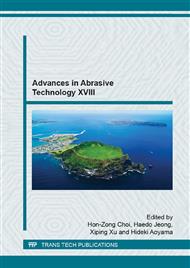[1]
OECD, Health at a Glance: Europe 2014, OECD Publishing. http: /dx. doi. org/10. 1787/ health_glance_eur-2014-en, (2014).
DOI: 10.1787/45c2530e-pt
Google Scholar
[2]
M. van der Meer, Bearbeitung keramischer Funktionsflächen, Dr. -Ing. thesis, PZH-Verlag, (2011).
Google Scholar
[3]
A. Müller, Polieren keramischer Knieimplantate mit nachgiebigen Diamantwerkzeugen, Dr. -Ing. thesis, PZH-Verlag, (2014).
Google Scholar
[4]
B. Denkena, J. Köhler, A. Turger, P. Helmecke, T. Correa, C. Hurschler, Manufacturing conditioned wear of all-ceramic knee prostheses, Procedia CIRP 5 (2013) 179 - 184.
DOI: 10.1016/j.procir.2013.01.036
Google Scholar
[5]
B. Denkena, M. van der Meer, Diamond tools for the grinding of complex ceramic implant surfaces, Adv. Mat. Res. 76-78 (2009) 33-37.
DOI: 10.4028/www.scientific.net/amr.76-78.33
Google Scholar
[6]
P. Bergschmidt, C. Lohmann, D. Ganzer, R. Bader, S. Finze, G. Kundt, C. Hauzeur, C. Lukas, W. Rüther, W. Mittelmeier, W, Knieendoprothetik mit keramischen Femurkomponenten – Nationale prospektive Multicenterstudie zum klinischen und radiologischen Outcome, Der Orthopäde 40 (2011).
DOI: 10.1007/s00132-010-1649-6
Google Scholar
[7]
J. Aurich, P. Herzenstiel, B. Kirsch, Experimental results using a grinding wheel with an internal cooling lubricant supply, Proceedings of 4th CIRP International Conference on High Performance Cutting, (2010).
DOI: 10.1007/s11740-010-0289-3
Google Scholar
[8]
R. Crowninshield, J. Jennings, M. Laurent, W. Maloney, Cemented femoral component surface finish mechanics, Clin Orthop Relat Res 355 (1998) 90-102.
DOI: 10.1097/00003086-199810000-00010
Google Scholar
[9]
W. Walsh, M. Svehla, J. Russell, M. Saito, T. Nakashima, R. Gillies, W. Bruce, R. Hori, Cemented fixation with PMMA or Bis-GMA resin hydroxyapatite cement: effect of implant surface roughness, Biomaterials 20 (2004) 4929-4934.
DOI: 10.1016/j.biomaterials.2003.12.020
Google Scholar
[10]
B. Denkena, J. Köhler, M. van der Meer, A roughness model for the machining of biomedical ceramics by toric grinding pins, CIRP J. Manuf. Sci. Technol 6 (2013) 22-33.
DOI: 10.1016/j.cirpj.2012.07.002
Google Scholar
[11]
L. Tatzig, B. Hering, B. Denkena, Bonding Systems for Grinding of Medical Ceramics, 48th DGBMT Annual Conference, Hannover, October 8-10, (2014).
Google Scholar
[12]
B. Denkena, L. de Leon, L. Behrens, Contact Conditions in 5-Axis-Grinding of Double Curved Surfaces with Toric Grinding Wheels, Adv. Mat. Res. 126 - 128 (2010) 41-46.
DOI: 10.4028/www.scientific.net/amr.126-128.41
Google Scholar


